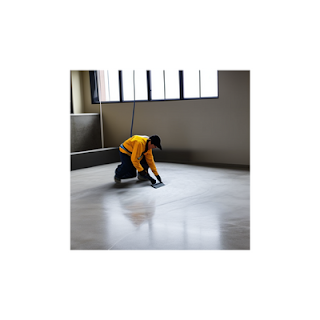Concrete is a popular material for driveways, patios, and other outdoor surfaces due to its durability and low maintenance requirements. However, concrete can still be damaged by outside factors such as snow, ice, grease, and dirt.
To prevent this damage from occurring, it is essential to hire a reputable concrete sealing contractor to apply a sealer to the surface of your concrete. Concrete sealers are a barrier between the concrete and these outside elements, protecting it from damage.
The benefits of using a concrete sealer are numerous. Not only does it protect your driveway or patio from damage caused by outside elements, but it also helps keep the surface looking new for longer. It also prevents staining from oil or other liquids that may come into contact with the surface.
Additionally, sealed concrete is easier to clean than unsealed surfaces since dirt and debris will not stick as quickly. Finally, sealed concrete can help reduce cracking over time due to temperature changes or heavy traffic on the surface.
Hiring a professional contractor to apply a sealer to your concrete surfaces is an excellent way to ensure they remain in good condition for years to come.
Factors Which Can Damage Unsealed Concrete
Unsealed concrete driveways are vulnerable to damage from a variety of sources.
Sunlight, water, and extreme temperatures can all cause concrete surface deterioration over time.
Sunlight can cause fading and discoloration of the concrete, while water can lead to cracking and spalling due to freeze-thaw cycles. Extreme temperatures can also cause expansion and contraction of the concrete, leading to cracks or other structural damage.
In addition to environmental factors, unsealed concrete driveways are susceptible to damage from chemical spills or contact with certain materials.
Oil and gasoline spills can leave permanent stains on the surface that are difficult to remove without professional help.
Contact with deicing salts or other chemicals used for snow removal can also cause surface corrosion over time. Finally, contact with abrasive materials such as sand or gravel can wear away at the driveway's surface, leaving it pitted and uneven.
Concrete is a popular material used in many construction projects, but it can be vulnerable to damage. The conditions under which it is poured, settlement, shrinkage, and overload can all cause concrete to crack and flake.
Sealing Concrete to Protect from Damage
Please consider applying a sealer to protect your concrete surface from further damage. Sealers act as a barrier between the concrete and various elements that can contribute to its deterioration.
Oil, chemicals, salt, grease, weather exposure, UV rays, and moisture are all potential sources of damage that can be prevented with a sealer.
 |
In addition to protecting against everyday wear and tear, sealing helps protect against water damage in cold climates. When ice covers your driveway or walkway during winter, water can seep below the surface of the concrete.
If this water freezes and expands, it can separate the concrete causing further damage. Sealing your concrete will help prevent this damage by creating an impermeable layer on top of the surface that will not allow water to penetrate beneath it. By sealing your concrete, you are taking proactive steps toward preserving its integrity for years to come!